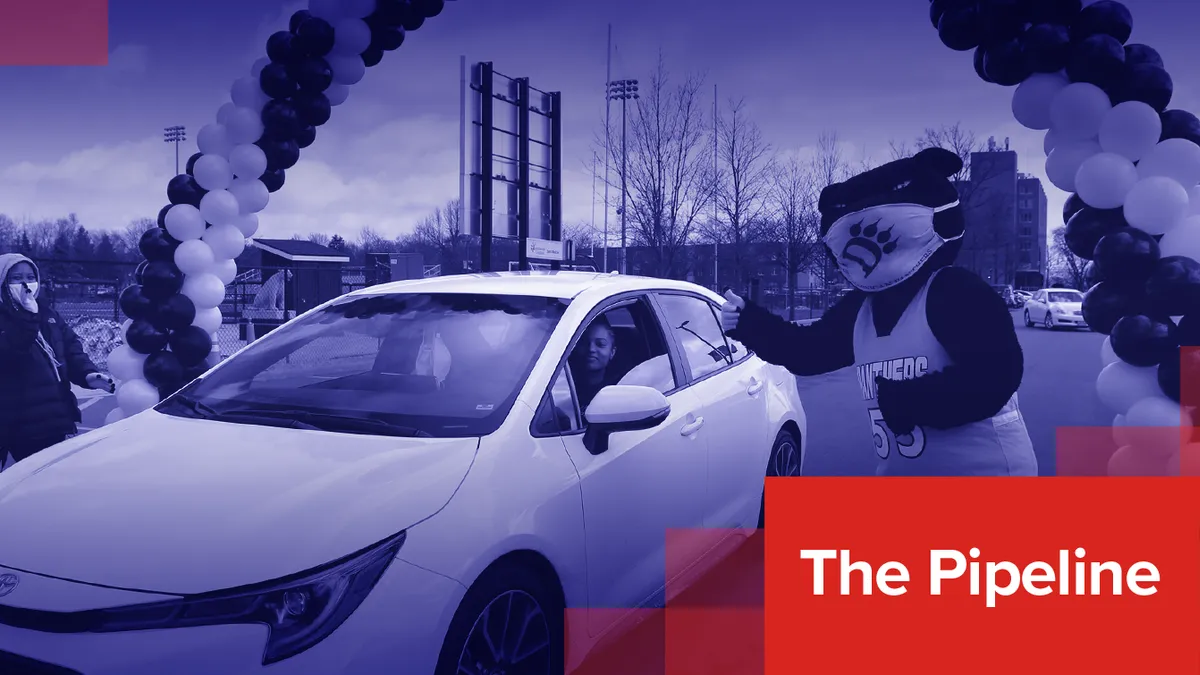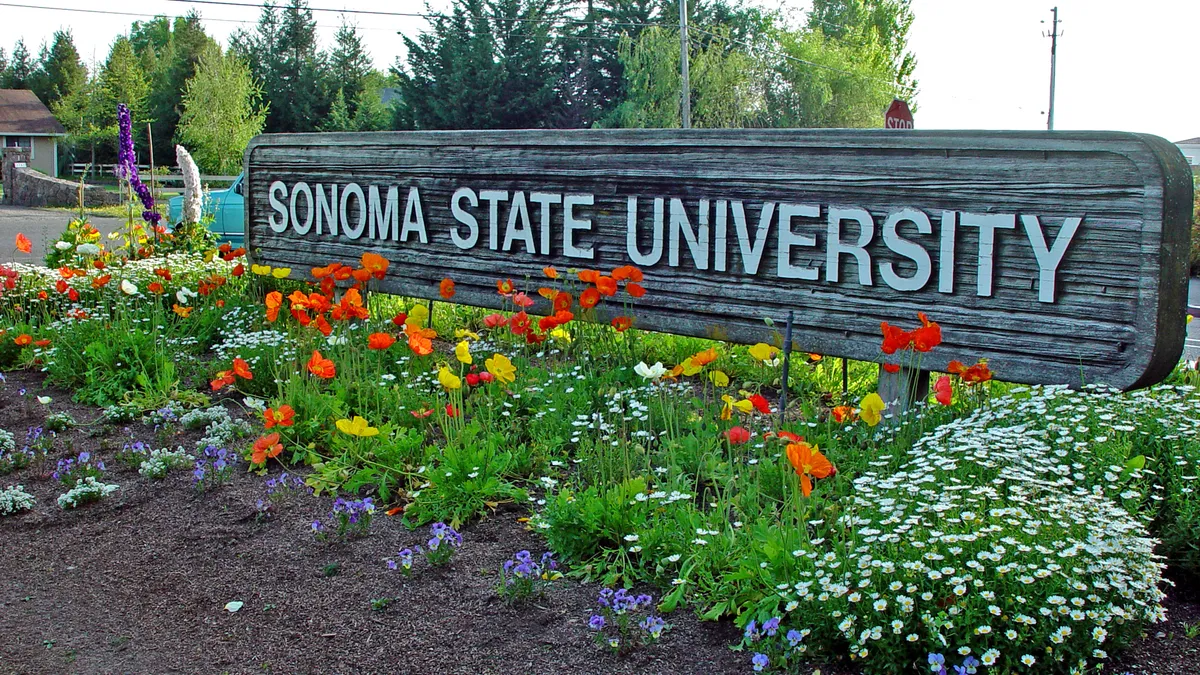Editor's note: It's harder than ever for colleges to fill their incoming classes, but some schools are meeting that challenge with creativity. In this monthly column, called The Pipeline, we'll spotlight innovative tactics colleges are using to cut through the noise and reach prospective students throughout the recruitment and enrollment process.
Instant-decision events at high schools were a popular, feel-good part of some colleges' recruiting playbook before the pandemic. Though coronavirus restrictions put the kibosh on many of those affairs, colleges are finding new ways to drum up excitement.
Ohio Dominican University, in Columbus, is one of at least a few schools taking the instant-decision idea back to campus with drive-through events that let prospective students learn on the spot whether they are admitted.
"We tried to meet students where they were," said Alecia Dennis, the university's undergraduate admissions director. Ohio Dominican already had success with a drive-in event for new students this past fall. So on a Monday in early March, it welcomed summer and fall 2021 applicants to the parking lot behind its student center to see if they made the cut.
A balloon archway marked the start of the process. Drivers would be directed to one of several stations that matched where they were in the admissions process. Admissions staff approached applicants, who stayed in their cars, at each station. QR codes directed students to webpages to submit their applications, upload their admissions materials and provide financial aid information. The codes helped make sure they were "as touchless as possible," Dennis said. Meanwhile, a self-serve hot chocolate station provided an antidote to the late-winter wind and chill.
Applicants with an official transcript and SAT or ACT score on hand or already submitted could receive an instant decision, while those with unofficial materials could get a conditional decision. Those who opted not to submit test scores could have their essay and recommendation letter reviewed on-site — a process Dennis said could take 15 to 20 minutes — and also receive a decision.
The university encouraged prospective attendees to register ahead so admissions staff could be better prepared to help them, and about 60% of students who said they would show up did. A dedicated website shared instructions for how to start the process.
Students who registered ahead and had a financial aid package available could also review that with school officials. Some saw their packages before the event while for others it was the first time, Dennis said.
Ten undergraduates applied during the event, a turnout Dennis is happy with. Of those, six were accepted. The remaining four were missing materials. (Ohio Dominican enrolls around 1,000 undergraduates, and it accepts about half of undergraduate applicants each year.)
This kind of event doesn't have to draw the masses to be considered a win, admissions experts said.
"You can expect whatever group you get at an event like that to be a highly engaged and highly interested group, which will be a valuable indicator in predicting or projecting conversion to enrollment," said Eric Page, senior vice president of enrollment and marketing strategy at Carnegie Dartlet, a marketing firm.
The university is holding another drive-through event on May 1. By that day, at least historically, students have had to commit to colleges that don't offer rolling admissions. Dennis expects a bigger turnout this time around. For one, it will be a Saturday, so applicants from farther away may be able to make the trip. The university is also inviting high school juniors who want to apply. And better weather is in the forecast.
Attendees can pick from two time slots spanning an hour-and-a-half each. A similar structure for the March event gave staff time to recoup, file documents and warm up, Dennis said.
Figuring out when students and their families are available can be a challenge. "You want to try and hedge your bets — multiple days and multiple times," said Madeleine Rhyneer, vice president of consulting and dean of enrollment management at consulting firm EAB.
Rhyneer commended the drive-through as a "pretty cool" adaptation of in-person acceptance events at high schools. It also showed "very high understanding of and empathy for where students and families are in the COVID era," she said.
The idea hasn't drawn universal acclaim. One college president criticized such events in an op-ed earlier this year, arguing that deciding which school to attend "requires more than a curbside pick-up."
For Rhyneer, however, they can help simplify the complex admissions process. A student still needs to apply, she added, and the events allow schools to start a conversation with that student and family about whether the institution would be a good fit.
Page, too, sees the events as an opportunity to connect. "It lets you ... focus your attention on the students who truly are interested."






















